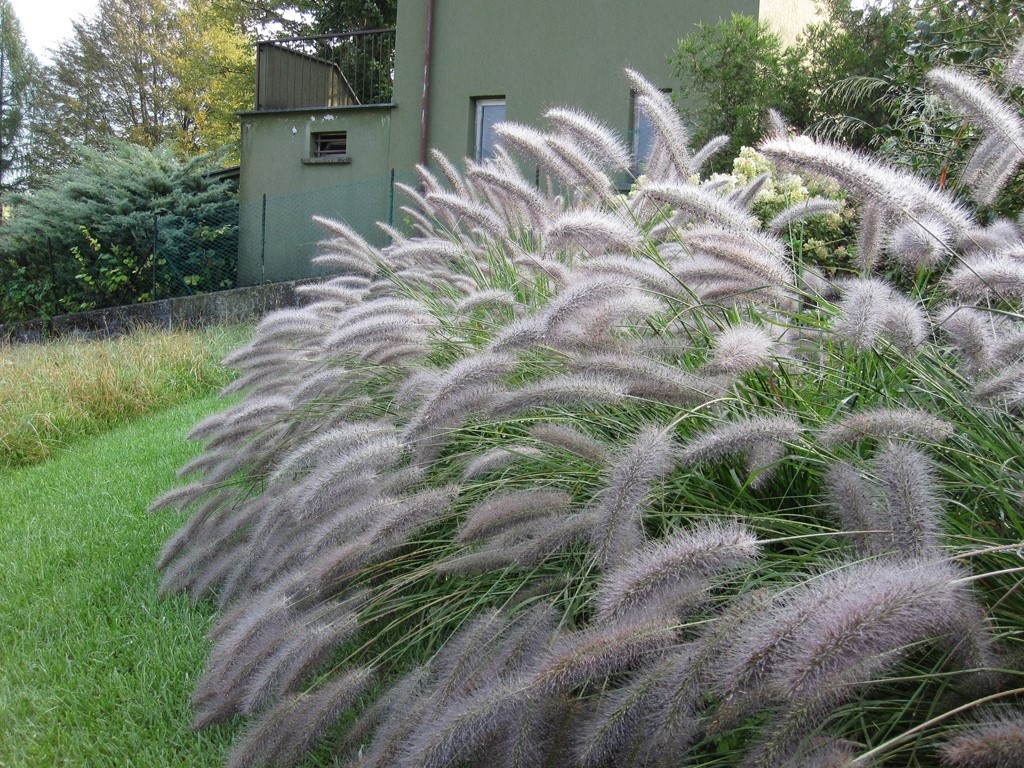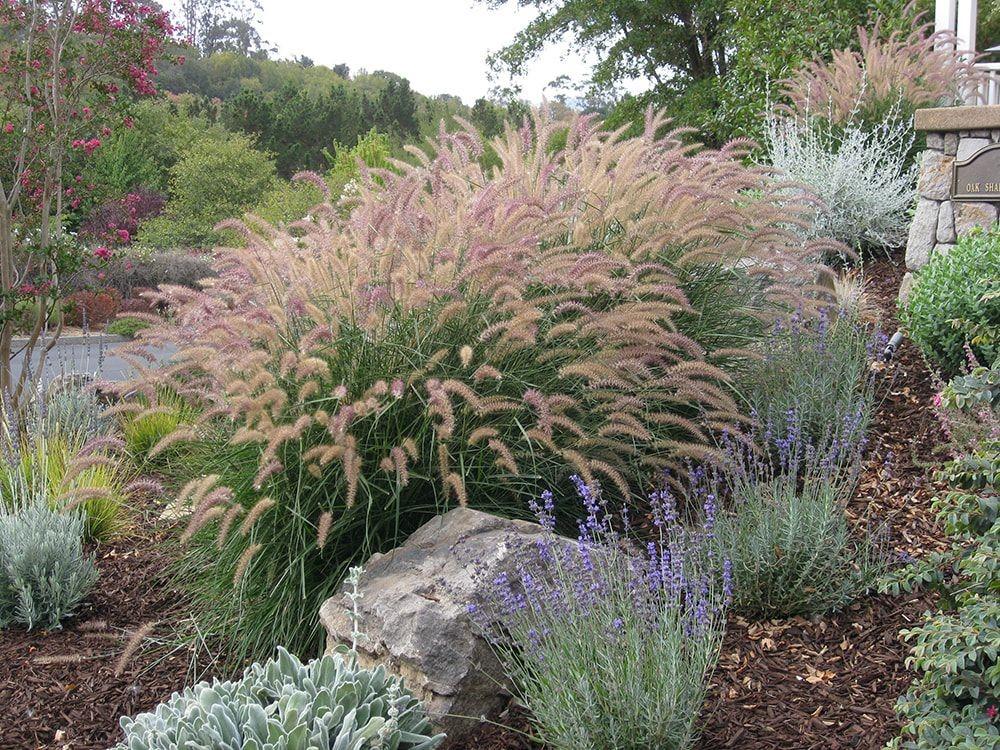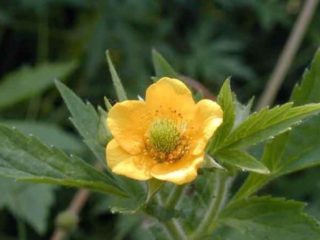Content
Pennisetum foxtail is a plant that is included in the Poaceae family. In its natural environment it grows in countries with warm and temperate climates. In Russia, not many people know about the culture, since it does not have sufficient winter hardiness to survive winters on its own. However, every year more and more landscape designers pay attention to pennisetum foxtail.
Description of foxtail pennisetum
Opinions differ about which country is the birthplace of the perennial. Some botanists believe that pennisetum foxtail appeared in India, another part - in China, while others say that its homeland is Australia. Each position is supported by ancient literature mentioning the plant. This allows us to judge that pennisetum foxtail grew everywhere.
The genus Pennisetum contains more than 130 species, but the most notable is the foxtail species. It is grown for decorative purposes, which is why the crop is sometimes found in southern parks.
The perennial leaves have a refined shape and can stretch from 40 to 160 cm in length. The stems are usually longer than the leaves. At their tips there are fluffy panicles - ears of white, red, purple shades. Outwardly they look like a fox tail.

Pennisetum foxtail species looks most beautiful outdoors - it sways like a surface of water through which a breeze has passed.
Planting foxtail pennisetum for seedlings
The cereal perennial is grown in seedlings. Seeds can be planted at home or in open ground. In the middle zone the climate is not as favorable as in the south. Therefore, it is recommended to plant first in the apartment, and only then transplant it outside.
When to plant
Reviews from gardeners about pennisetum foxtail say that in the Moscow region and mid-latitudes the best time for planting is mid-to-late February. In this case, the bush will be able to form flowers this season.
Soil preparation
You can make your own soil for seedlings by taking sand, peat and a shovel of garden soil. The soil is calcined at high temperatures to disinfect it. Experts advise beginners to purchase ready-made soil - peat cups are the best option. There is no need to pick foxtail pennisetum.
How to plant
Seeds are sown at a short distance from each other. It is enough to deepen them by 2 mm, then water them, cover them with film and place them on the windowsill, avoiding direct light. This is where the work is being completed for now.
Seedling care
After planting seeds, foxtail pennisetum requires care, and it consists of the following activities. When the seedlings appear - in about a week - a light is placed next to the pot, since the days pass quickly in February.

Remove the film from the seedlings and continue to water moderately
Two weeks before transplanting into the garden, they begin to harden the pennisetum, that is, first for a short time, and then put the pot outside for a long time, gradually increasing the period of time.
Planting in open ground
When the bushes grow to 10 cm, they can be transplanted to another place. The main thing is that the weather is warm by then. The planting site is prepared in advance: it should be loose, nutritious and not too acidic - preferably neutral in reaction.
The perennial has a tendency to grow, so the seedlings are placed at a distance (50-100 cm). The hole is dug taking into account the earthen clod, plus an additional few centimeters of reserve. Pennisetum foxtail species must be watered to remove the seedlings along with the lump. The transplant is carried out in May or early summer, planted at the same level as before.
When the bush is in a new place, the soil around the stems is compacted and moistened abundantly. In the process of growing from seeds, the growth of pennisetum foxtail should be controlled, otherwise the crop will fill the surrounding space.If frequent pruning is not possible, slate can be laid in the soil and thus inhibit the formation of shoots.
Caring for foxtail pennisetum in the garden
Despite the low frost resistance, caring for the foxtail species of pennisetum does not cause problems. The main thing is to follow agricultural practices.
Watering
To speed up adaptation, pennisetum is watered regularly. When the top layer of soil begins to dry out, this is a sign that it is time to moisten it a little. If the rains also contribute to this, you can forget about watering yourself for a while.

In drought, on the contrary, you have to additionally irrigate the plant - do it at the root so as not to burn the foliage
Loosening and weeding
Like other crops, foxtail pennisetum needs loosening. The procedure improves the passage of water, air and nutrients to the roots. Loosening is done after each watering, but if this is too often for the gardener, monthly digging is allowed.
The foxtail species of pennisetum quickly takes root in the garden. Weeds can interfere with growth. To prevent grass from appearing, cover the ground around the stems with mulch. The same measure will reduce the amount of moisture, since the moisture in the mulch lasts a long time.
Feeding
Foxtail pennisetum is a resilient crop that can grow in the wild. The difference between such bushes and cultivated ones is their decorativeness. To grow a strong and beautiful crop, fertilizing is useful. It is useful to add them in moderate quantities even to fertile substrate.
If the planting hole has been fertilized, subsequent additives are applied after two years. Pennisetum foxtail species is fertilized once a month, starting in spring.During the growing season, nitrogen and a small amount of other minerals are used, which can be supplemented with organic matter. In the summer they switch to preparations for flowers - with potassium and phosphorus.
Trimming
The perennial does not need a decorative haircut, as it already looks neat. Some say that when frosts arrive, it is better to cut the bushes. Botanists do not agree with this - it is impossible to cut pennisetum to the ground, since the above-ground part serves to protect the roots from the cold. In addition, a bush covered with snow looks interesting in the garden.
Trimming is carried out only for sanitary purposes, in order to remove dry leaves that are unsuitable for further growth. The top is cut off in March, before the growing season.
Preparing for winter
It's no secret that the climate changes over the years. Temperatures are rising, making some areas unsuitable for life, while others, on the contrary, are favorable for this. Today, foxtail pennisetum species can be grown without shelter only in the southern regions of Russia.
As for the middle zone and the Moscow region, it is still difficult for the plant to adapt to independent wintering. Therefore, the plantings are at least covered with conifer branches.

Non-frost-resistant varieties are recommended to be grown on the balcony
To prevent rotting of the roots, pennisetum foxtail is tied into a bundle during cold weather (so water will not be able to seep into the center). If the grass is green, there is no need to rush - wait until the chlorophyll leaves the foliage. Even then the crop is tied and covered with mulch.
Reproduction
The foxtail species pennisetum is propagated in two ways. The seedling method is the most popular for the Russian climate. If an adult crop is already growing on the site, you can quickly get a daughter bush by dividing it. Pennisetum does not support other methods of reproduction.
Seeds
Summer residents begin to get acquainted with perennials in garden stores. There they sell it as seeds, in small bags. When the variety you like is selected, the material is sown at home or in open ground.
If the crop is perennial (like pennisetum foxtail), planting begins in February or early spring. When working in March, it is not always possible to catch flowering during the current season; this should be remembered.
If you decide to fill the pot yourself, there are three requirements for the substrate: looseness, moisture, and fertilization. The seeds are periodically sprayed with water. At the end of the work, the container is covered with polyethylene and placed on the windowsill.
Pennisetum sprouts will hatch in 8-10 days. They must be watered and given additional light. In some cases, fertilizing is allowed. The seeds can be planted immediately in a flowerbed, as is sometimes practiced in the south, but flowering will begin later. Therefore, the seedling method is the most common.
Dividing the bush
Pennisetum foxtail has good growth rates. If adult specimens are grown in the country, the owner can divide them to get more flowers.

The procedure is also useful for the parent bush - this way it rejuvenates
Foxtail pennisetum should be carefully dug up, trying to deepen the shovel as far as possible. The culture is removed along with the roots, holding the stems with one hand. After this, shake off the soil and divide the plant into several parts. The middle part of the roots is not used.
A place must be prepared for the daughter samples; it will not be possible to store the material for a long time. Immediately after cutting, they are planted in a new area, possibly next to the mother bush or far from it. Propagated in early spring, before the leaves begin to grow.
Pests and diseases
Foxtail pennisetum is susceptible to disease in exceptional cases. If you provide him with proper care, the summer resident may not even worry about preventive treatments with drugs.
The cereal perennial is not of interest to slugs and aphids. They are likely to prefer other plants for feeding.
Diseases usually do not bother foxtail pennisetum. An exception may be gray rot, which affects the roots of the plant and prevents it from developing. It occurs in swampy or heavy soil.
Photo of foxtail pennisetum in landscape design

Foxtail pennisetum can serve as a backdrop for bright, low-growing flowers

With the help of the plant it is possible to naturally delimit flower beds

Thanks to their lushness, densely planted bushes protect the garden from the winds

The grass looks great against the background of natural stone; 1-2 bushes are planted next to large cobblestones
Conclusion
Pennisetum foxtail is just one of dozens of representatives of the genus. In turn, it is divided into varieties. The culture became widespread in Russia, Asia and Europe. And although low frost resistance creates obstacles for growing in temperate climates, gardeners are ready to overcome them in order to enjoy flowering on their own plot.
Reviews of foxtail pennisetum








